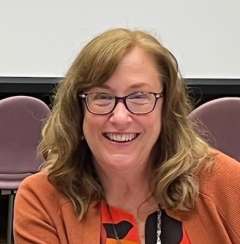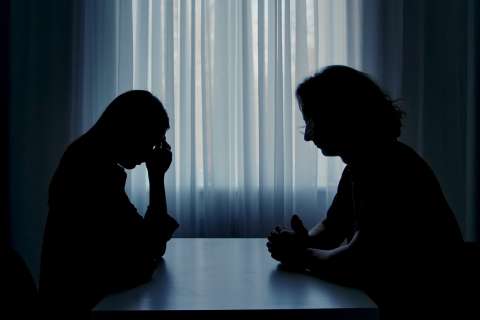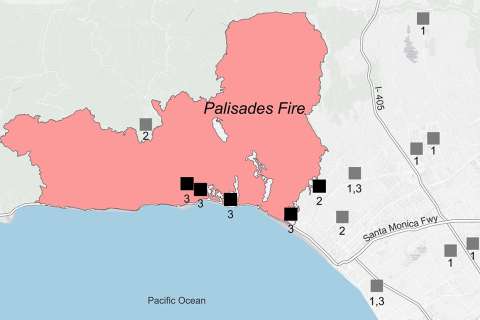Making art can be a fun and satisfying endeavor. But for people with cancer, it can also be a therapeutic tool of empowerment for getting through the rigors of medical treatment.
Board certified art therapist Paige Asawa, PhD, MFT, believes that expressing oneself is an important part of the path to recovery. The weekly Healing Through Art psychotherapy group, which she facilitates through the Simms Mann UCLA Center for Integrative Oncology, is intended to provide that empowerment – to help participants maintain some control over their feelings and mental state during and after treatment.

Dr. Asawa will be discussing the power of expressive arts as a keynote speaker at the Southern Counties Regional Partnership conference March 26-27 in Pomona. She will present the Day 1 afternoon keynote, “Healing the Healer - Integrating the Expressive Arts in Self Care,” followed
by a session on “Integrated Care with Cancer Patients Using Expressive Arts.”
At the Simms Mann Center, the purpose of the virtual art therapy group isn't really about the end result of the artwork, she said, but more for participants to engage in a healthy process of creative expression that helps to clarify thoughts and feelings, and helps combat the stress of treatments and lifestyle changes.
"All of a sudden, in this group, they realize, 'Wow, this is a tool. This is something I can use to get through this period.' So, I share ideas and thoughts and art interventions that they can work on while they're waiting for appointments, or when their anxiety is high about a scan or test," said Dr. Asawa, who has taught art therapy for more than 30 years and is in her second year as an art therapist for the Simms Mann Center.
Maintaining control
Engaging in artwork can be much more than just a diversion for the patient, she said. Being in command of what they create can give the artist/patient a better feeling of control at an uncertain time.
"The anxiety that they are going through is really intense. Getting involved with art can help them to manage that anxiety and take charge of how they feel. It is very empowering for them to feel like they can take action, and feel more that they are in control," Dr. Asawa said. "If they can express their feelings about their cancer experience in art, then they are in charge of it for that moment."
Dr. Asawa encourages interaction between the participants, some of whom are experienced artists while others are just beginning. She encourages them to use whatever they have around the house for materials, even just a pencil and paper for sketches.
A key part of the art psychotherapy group is when participants have the opportunity to show their art to others. Since often the theme of the art is their experience with cancer, the group gives them a uniquely empathetic audience.
"They get that feedback from others who are dealing with what they are going through with cancer. They can relate to each other, in ways that people who don't have cancer just might not quite understand," Dr. Asawa said.
The common ground makes for a strong support group and adds substance to the artwork. During a recent program, Dr. Asawa said, participants were sharing drawings and a that led to a discussion of the passage of time. How going through cancer treatment can affect a person's perception of time emerged as a theme.
"It was amazing to see how they represented the concept, from something very concrete, like a timeline, to very abstract expressions of temporal experiences," Dr. Asawa said. "It encouraged discussion and a lot of thought."
One of the participants said she was able to share thoughts with the group that she hasn't been able to express with anyone else.
"She was able to express her feelings through the art and share with the group things that she can't share with most people, because they wouldn't understand,” Dr. Asawa said. “But if you've been on the same journey, then you understand her."
A calling
Dr. Asawa said she feels like she was destined to run the art therapy group, in part because of her family history.
“So many people in my family have had cancer, survived cancer, or died of cancer,” she said. “I think this is an important way for me to give back to the community.”
Dr. Asawa said she also has used art therapy to help young children surviving trauma, troubled teenagers, and veterans with post-traumatic stress disorder.
She said she empathizes with people who survive trauma. She lived 1 mile from the epicenter of the massive 1992 Northridge earthquake and was forced to leave her home carrying her belongings. That experience inspired her to go to Louisiana after Hurricane Katrina in 2005, to provide art therapy for relocated families living in temporary housing.
"One thing that strikes me is all of the similarities between what cancer patients experience and people who have been through disasters or other traumas. They are all on the journey to make it through a traumatic experience to restore their sense of peace and growth, and I am honored to walk part of that journey with them," she said.
Dr. Asawa said it is important for loved ones to realize that the traumatic experience is not simply erased when a patient finishes treatment and survives cancer. This is why some patients in her group continue with art therapy long after they finish treatment.
"That's why I love this group,” she said. “Because people who come to this group come to it because they really want to tap into their creativity to open up and share with others. And they are ready to do that. That can take time. One of the participants is about a year out of treatment and is just now finding herself being able to express what she went through. Expressing that is valuable to her, but it's also very valuable to everyone else in the group."




